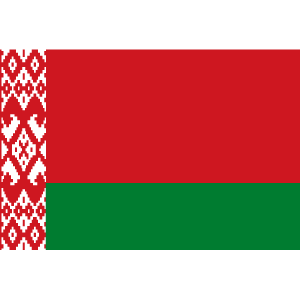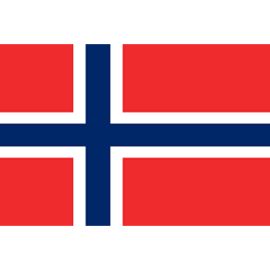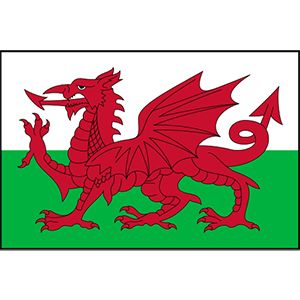Search results
Other games
Group B GP W D L Pts 1  France
France8 7 1 0 22 2  Netherlands
Netherlands8 6 0 2 18 3  Greece
Greece8 4 1 3 13 4  Republic of Ireland
Republic of Ireland8 2 0 6 6 5  Gibraltar
Gibraltar8 0 0 8 0 Group C GP W D L Pts 1  England
England8 6 2 0 20 2  Italy
Italy8 4 2 2 14 3  Ukraine
Ukraine8 4 2 2 14 4  North-Macedonia
North-Macedonia8 2 2 4 8 5  Malta
Malta8 0 0 8 0 Group E GP W D L Pts 1  Albania
Albania8 4 3 1 15 2  Czech Republic
Czech Republic8 4 3 1 15 3  Poland
Poland8 3 2 3 11 4  Moldova
Moldova8 2 4 2 10 5  Faroe Islands
Faroe Islands8 0 2 6 2 Group F GP W D L Pts 1  Belgium
Belgium8 6 2 0 20 2 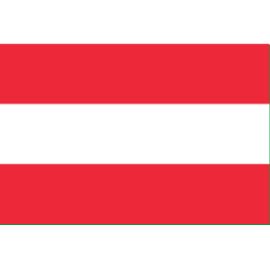 Austria
Austria8 6 1 1 19 3 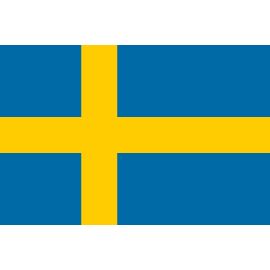 Sweden
Sweden8 3 1 4 10 4  Azerbaijan
Azerbaijan8 2 1 5 7 5  Estonia
Estonia8 0 1 7 1 Belarus, officially the Republic of Belarus, is a landlocked country in Eastern Europe. It is bordered by Russia to the east and northeast, Ukraine to the south, Poland to the west, and Lithuania and Latvia to the northwest.
- dd.mm.yyyy
- Unitary presidential republic under a dictatorship
- Overview
- Land
- Relief
- Drainage
- Soils
- Climate
- Plant and animal life
- Environmental concerns
Belarus, landlocked country of eastern Europe. Until it became independent in 1991, Belarus, formerly known as Belorussia or White Russia, was the smallest of the three Slavic republics included in the Soviet Union (the larger two being Russia and Ukraine).
While Belarusians share a distinct ethnic identity and language, they never previously enjoyed unity and political sovereignty, except during a brief period in 1918. Belarusian history is thus less an isolable national narrative than a study of regional forces, their interplay, and their effects on the Belarusian people. The territory that is now Belarus underwent partition and changed hands repeatedly; as a result, much of the history of Belarus is inseparable from that of its neighbours. Since independence Belarus has retained close ties to its most dominant neighbour, Russia. In 1999 the two countries signed the Union State Foundation Treaty, which aimed to create a politically integrated confederation with a common currency; the precise nature of the partnership, however, remained unclear well into the 21st century. The legacy of Belarus’s Soviet past also continued to manifest itself, both in the persistent prominence of communist political parties and in the country’s authoritarian style of government. About one-fifth of the population of Belarus resides in the centrally located capital, Minsk, a sprawling modern city that was almost entirely rebuilt after its near destruction in World War II.
Belarus is a landlocked country bordered by Lithuania and Latvia to the northwest, by Russia to the north and east, by Ukraine to the south, and by Poland to the west. In area, it is roughly one-third the size of its southern neighbour, Ukraine.
The topography of Belarus was largely shaped by glaciation during the Pleistocene Epoch (i.e., about 2,600,000 to 11,700 years ago). Much of the country consists of flat lowlands separated by low level-topped hills and uplands. The highest point, Dzyarzhynskaya Hill, is only 1,135 feet (346 metres) above sea level, and more than half the surface area of Belarus lies below 660 feet (200 metres). The higher areas are formed by ridges of glacial morainic material dating from the Valday glaciation, the last advance of Pleistocene ice in eastern Europe. The largest of the ridges, the Belarusian Ridge, extends northeastward from the Polish border on the southwest to north of Minsk, where it widens into the Minsk Upland before turning eastward to link up with the Smolensk-Moscow Upland. Running transverse to the main Belarusian Ridge, the Ashmyany Upland, consisting of terminal moraines from the same glacial period, lies between Minsk and Vilnius, in neighbouring Lithuania. The surfaces of its ridges tend to be flat or gently rolling and covered by light sandy podzolic soils; they are largely cleared of their original forest cover.
Britannica Quiz
The Country Quiz
Separated by the morainic ridges lie wide lowlands, which are mostly poorly drained and marshy and contain many small lakes. To the north of the main line of morainic hills are two broad plains: the north of the republic comprises the Polatsk Lowland, and the northwestern corner, near Hrodna, is the Neman (Belarusian: Nyoman) Lowland. South of the Belarusian Ridge the wide and very flat Central Byarezina Plain gently slopes southward to merge imperceptibly with the even more extensive Pripet Marshes (Belarusian: Palyessye, “Woodlands”). A waterlogged area in the basin of the Pripet (Belarusian: Prypyats’) River, a main tributary of the Dnieper (Belarusian: Dnyapro), the Pripet Marshes extend southward into Ukraine and occupy a structural trough. The trough is filled with outwash sands and gravels deposited by the meltwaters of the last Pleistocene glaciation. The minimal variation in relief makes the Pripet Marshes among the largest wetlands in Europe.
Belarus has more than 20,000 streams, with a total length of about 56,300 miles (90,600 km), and more than 10,000 lakes. The greater part of the republic lies in the basin of the Dnieper—which flows across Belarus from north to south on its way to the Black Sea—and the basins of its major tributaries, the Byarezina and Pripet on the right bank and the Sozh on the left. In the north the Polatsk Lowland is drained by the Western Dvina (Dzvina) River to the Baltic Sea, to which also flows the Neman (Nyoman) in the west. The extreme southwestern corner of Belarus is drained by the Mukhavyets, a tributary of the Bug (Buh) River, which forms part of the border with Poland and flows to the Baltic Sea. The Mukhavyets and Pripet are linked by a ship canal, thereby connecting the Baltic and Black seas. The rivers are generally frozen from December to late March, after which occur about two months of maximum flow. Among the largest lakes are Narach, Osveyskoye, and Drysvyaty.
Students save 67%! Learn more about our special academic rate today.
About three-fifths of Belarus is covered by podzolic soils. On the uplands these soils are mainly clay loams developed on loess subsoils, which can be productive with the use of fertilizers. The plains and lowlands have mostly sandy podzols of low fertility interspersed with swampy clays, which have a high humus content and can be very fertile when...
Belarus has a cool continental climate moderated by maritime influences from the Atlantic Ocean. Average January temperatures range from the mid-20s F (about −4 °C) in the southwest to the upper teens F (about −8 °C) in the northeast, but thaw days are frequent; correspondingly, the frost-free period decreases from more than 170 days in the southwe...
The natural vegetation of the country is mixed deciduous and coniferous forest. In the north, conifers, notably pine and spruce, tend to predominate; southward the proportion of deciduous trees, such as oak and hornbeam, increases. Birch is common everywhere, especially as the first growth on burned or disturbed areas. Over the centuries, the clearing of forest land for agricultural use has removed the greater part of the primeval forest, especially the deciduous trees, which prefer richer soils. In particular, the forest of the uplands had largely been removed by the late 16th century.
The Belovezhskaya (Belarusian: Byelavyezhskaya) Forest, on the western border with Poland (into which it extends), is one of the largest surviving areas of primeval mixed forest in Europe, encompassing more than 460 square miles (1,200 square km). The Belarusian portion of the forest was designated a UNESCO World Heritage site in 1992. Preserved for centuries as the private hunting forest of first the Polish kings and later the Russian tsars, it was made a nature reserve (and later a national park) on both sides of the frontier. The rich forest vegetation that once covered much of Europe survives here, dominated by trees that have grown to exceptional heights. The forest is the major home of the European bison, or wisent, which had become extinct in the wild following World War I but was reintroduced through captive breeding. Elk, deer, and boars also are found there and in other forests of Belarus, together with small game, hares, squirrels, foxes, badgers, martens, and, along the rivers, beavers. Birds include grouse, partridge, woodcocks, snipes, and ducks, and many of the rivers are well stocked with fish.
The accident at the Chernobyl nuclear power plant in Ukraine in April 1986 resulted in a number of immediate and long-term consequences for the environment of Belarus, where most of the fallout occurred. In the early 21st century about one-fifth of Belarus’s land was still radioactively contaminated. In addition to the land damage, the medical and psychological costs of the accident included an increase in birth defects and cancer (particularly of the thyroid) and a declining birth rate, at least partly in response to fears of those defects.
Environmental activists also have expressed concerns about poor air quality and pollution in Minsk and other major cities.
Mar 20, 2024 · The UN human rights office found that Belarus has closed civic space, arrested and tortured thousands of protesters, and prevented people from returning to the country. The report also raised concerns over the upcoming presidential elections and the fate of missing opposition members.
Jul 22, 2023 · In Belarus, red and white are the colors of the protest movement against the country’s authoritarian leader, Aleksandr G. Lukashenko. And even the smallest sign of protest can land a person in...
4 days ago · the military of Belarus is responsible for territorial defense; it is a mixed force of conscripts and professionals that is equipped with Russian or Soviet-era weapons; the Army’s principal combat forces are divided into two geographically based commands, each with two mechanized brigades and an artillery brigade; there are also separate ...
Sep 8, 2020 · A 73-year-old great-grandmother has turned into an unlikely hero for demonstrators in Belarus. At major state-owned enterprises around the country, workers called strikes and joined the protests ...
Feb 26, 2024 · Lenin and the Belarussian flag in front of the parliament building in Minsk. Provides an overview of Belarus, including key events and facts about this east European country.
